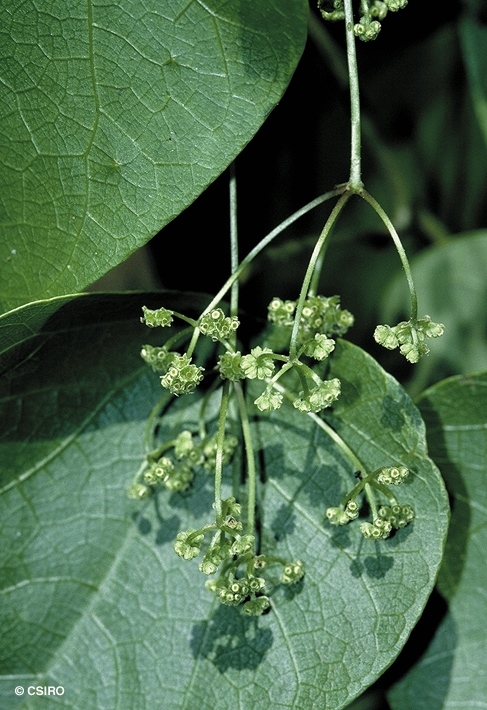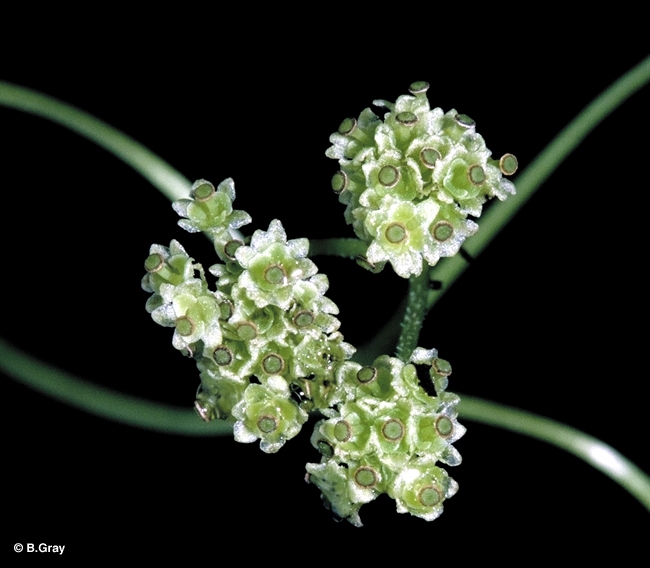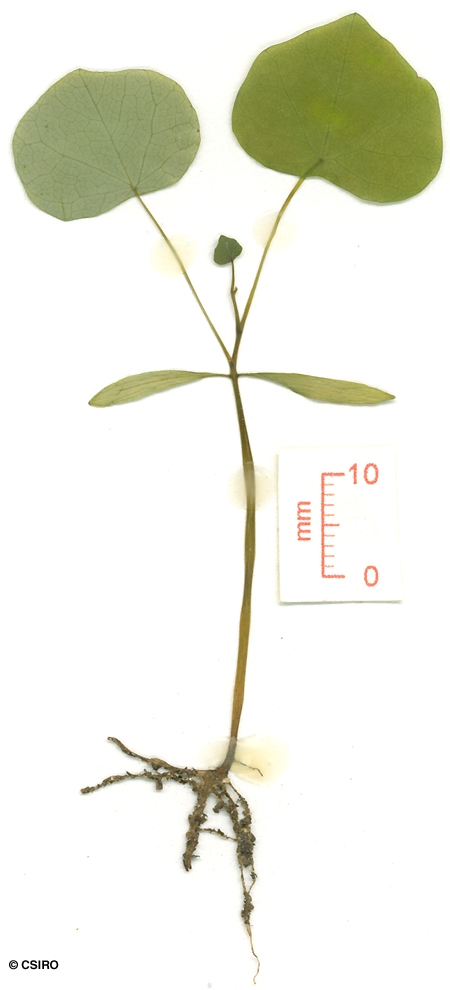Australian Tropical Rainforest Plants - Online edition
Stephania japonica (Thunb.) Miers var. japonica








Forman, L.L. (1957) Kew Bulletin 11 11: 54.
Tape Vine; Snake Vine; Vine, Snake
A slender vine not exceeding a stem diameter of 2 cm.
Leaf blades about 6-14 x 5-12.5 cm, much paler on the underside, petioles about 4-8.5 cm long. Twigs longitudinally grooved. About nine veins, including the midrib, radiating from the point of attachment of the petiole.
Male flowers: Inflorescence about 2.5-9 cm long, consisting of a number of umbels each containing a number of heads. Flowers small, about 2.5-3 mm diam. Sepals (tepals) in two whorls with four sepals (tepals) in each whorl. Narrow sepals (tepals) about 1.5 mm long. Broad sepals (tepals) about 1 mm long. Stamens fused to form a peltate structure. Pollen white. Female flowers: Inflorescence up to 10-11 cm long. Flowers borne in umbels which in turn are arranged in umbels. Flowers about 1-1.25 mm diam. Sepals narrowly elliptic, about 0.75-1 mm long, hairy on the outer surface. Petals broadly obovate to orbicular, about 0.75-1 mm long. Ovary about 1-1.25 mm long. Stigma two or three-lobed.
Fruits laterally compressed, about 7-8 x 6-7 mm, style remnants lateral, not far removed from the point of attachment of the fruit stalk. Endocarps, laterally compressed, spiny or rugose on the periphery, each endocarp about 5-6 x 4-5 mm. Embryo horseshoe-shaped, almost forming a circle, about 10-12 mm long. Cotyledons about 4 mm long. Radicle U-shaped, about 0.7-0.8 mm diam., longer and perhaps slightly wider than the cotyledons.
Cotyledons oblong-oblanceolate, about 14-18 x 2 mm, venation more obvious on the underside. First leaf blade wider than long, apex apiculate, base peltate. Petiole much longer than the leaf blade. At the tenth leaf stage: leaf peltate, leaf blade cordate, apex mucronate, base cordate. Venation palmate. Underside very pale. Midrib slightly raised on the upper surface. Stem twining. Seed germination time 20 days.
This species has been suspected of being poisonous to stock but feeding tests have not confirmed this. Everist (1974).
Fruit eaten by Lewin's Honeyeaters, Victoria's Riflebirds and Golden Whistlers. Cooper & Cooper (1994).





